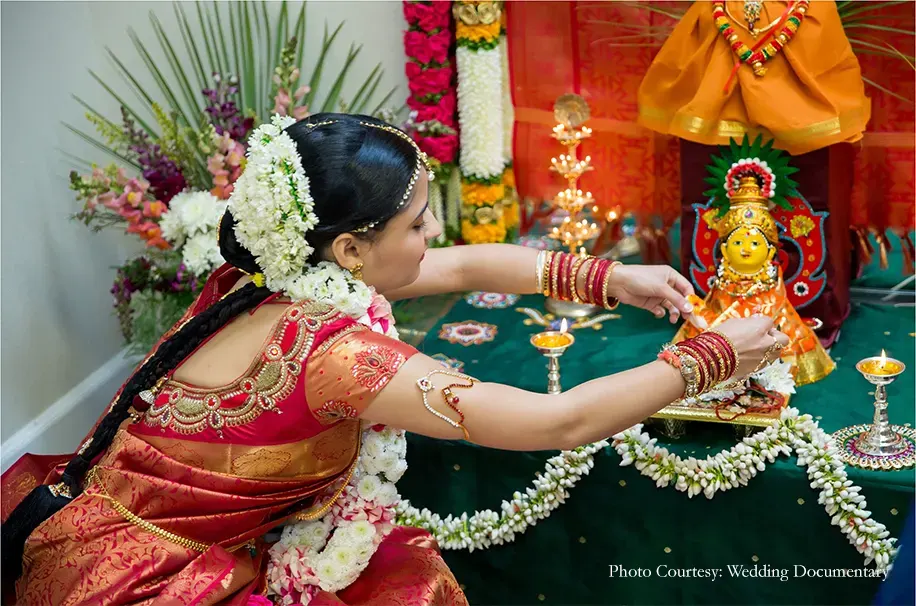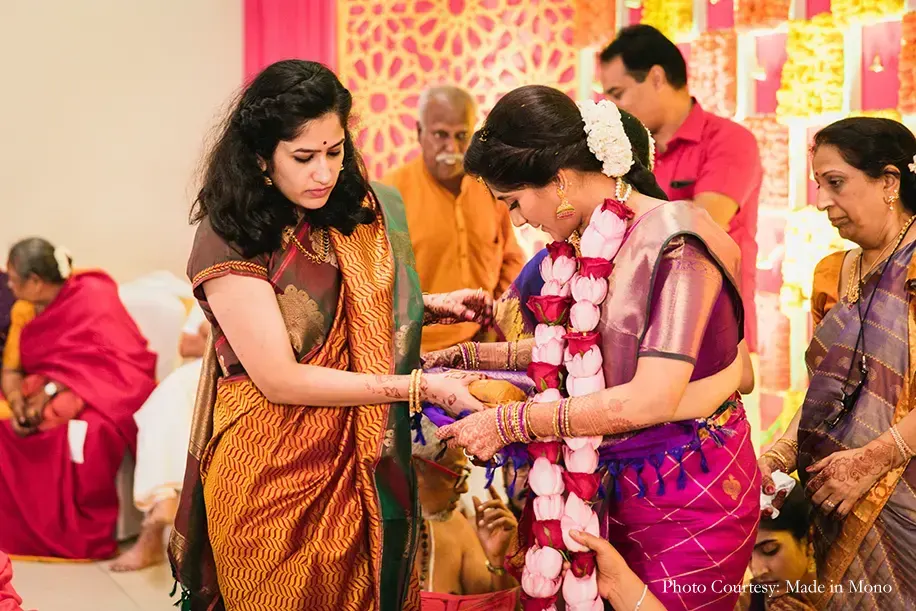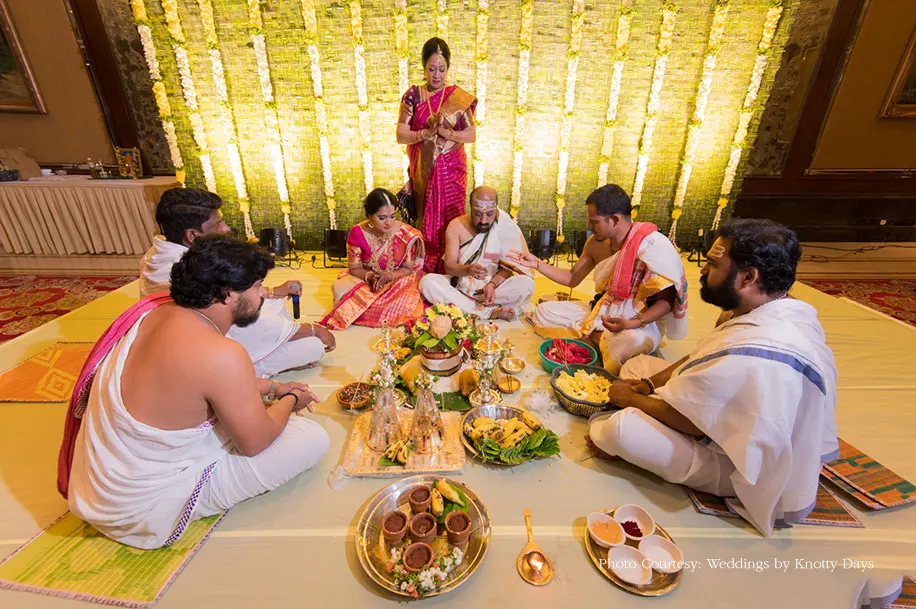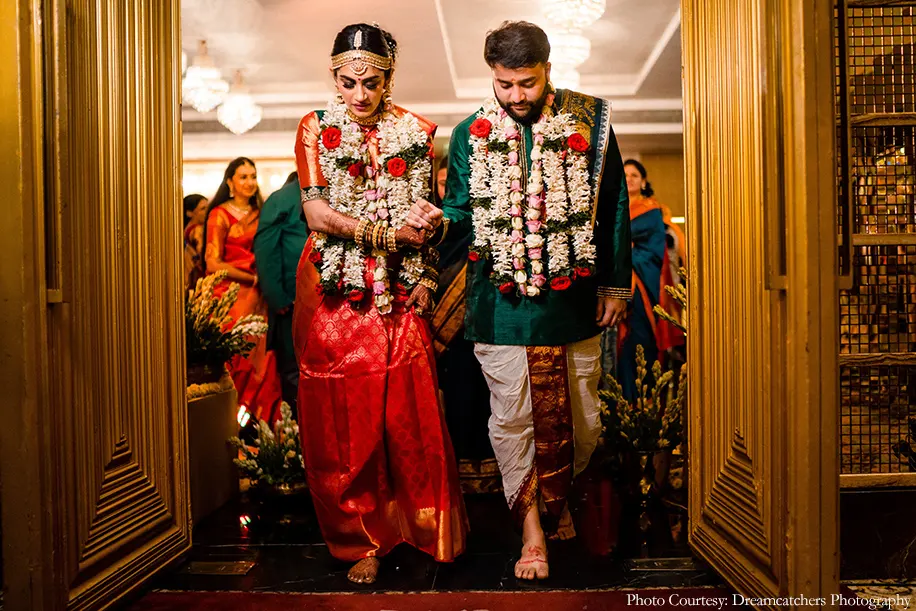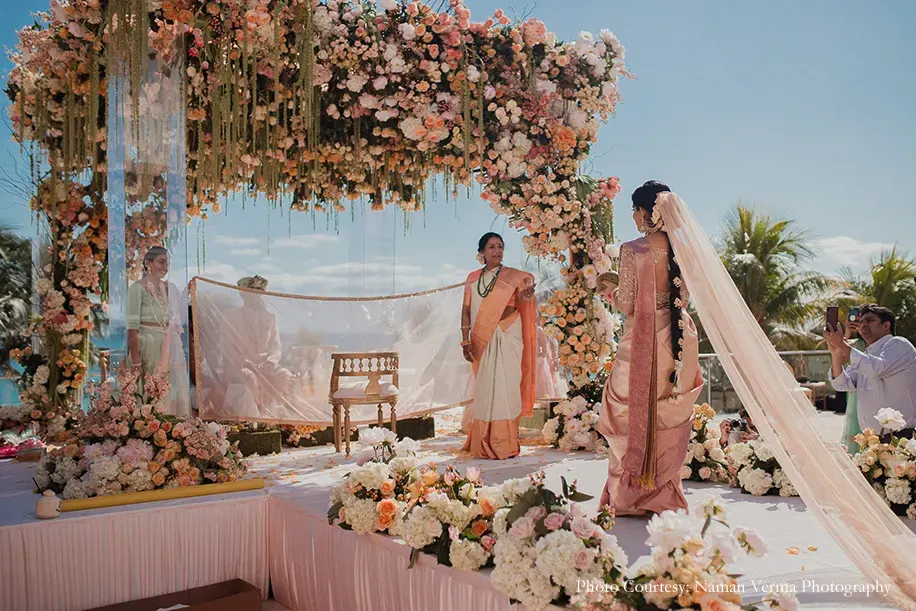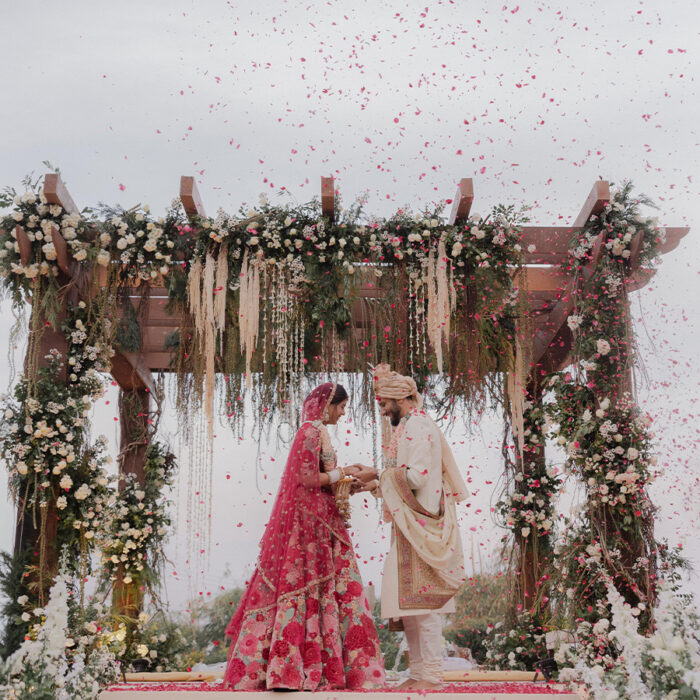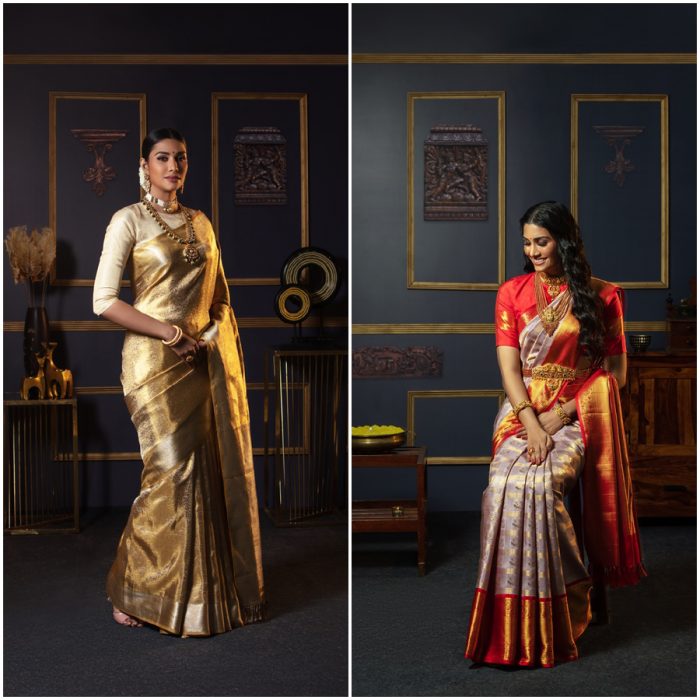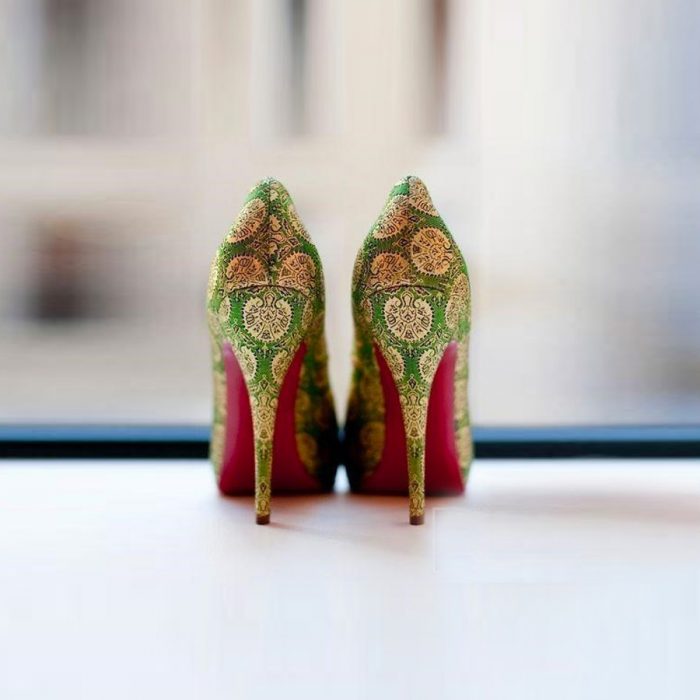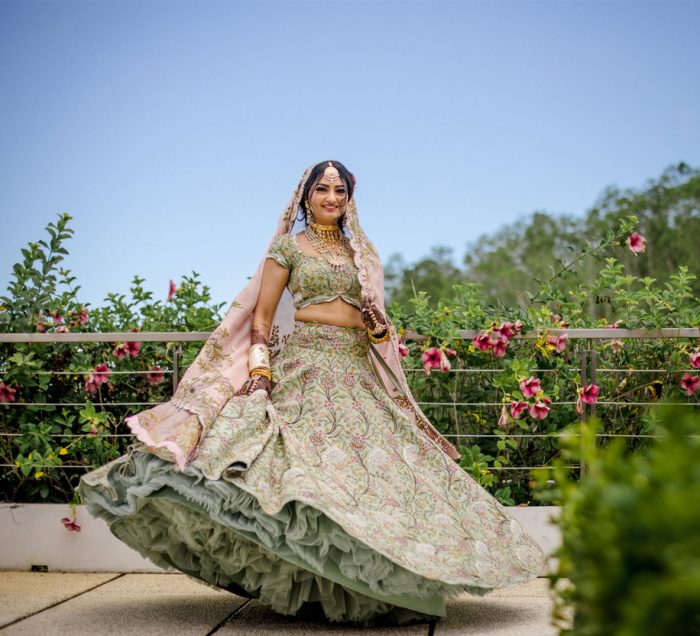Tamil Weddings: Customs and Traditions
Rituals, customs, style and more! Here's everything you need to know about Tamil weddings.
Emerging out of one of the oldest cultures of India, Tamil Brahmin weddings emphasize the celebration of heritage and customs over displays of grandeur. Exploring the depth and intricacies of Tamil Brahmin wedding traditions, we bring you this installment of the Wedding Tradition Series: a kaleidoscopic guide to different regional cultures, spanning rituals, customs, fashion and more.

Photo Courtesy: Once Upon a Time Wedding Tales
As more couples from different cultures or even countries tie the knot, they desire a beautiful blend of celebrations that will stay with them and their guests forever. Whether you are a bride or groom-to-be planning your wedding, or a guest invited to a friend’s big day, planning for a celebration that is new to you can often get stressful. This wedding tradition series is aimed at answering all your questions about ceremonies and their significance, how to dress for different functions, and unique aspects of the experience to embrace, traversing one culture at a time.
Welcome to the kaleidoscopic traditions of Tamil weddings!
Wedding Functions
Panda Kaal Muhurtam
Once the wedding is finalized, the bride and groom’s families offer their prayers to their deity and seek blessings for a successful marriage and for the protection of the couple. Mostly held a day before the wedding, it is attended by close family members and generally held at a temple or their homes.
Photo Courtesy: Wedding Documentary
Sumangali Prarthanai
Sumangalis are women who have led happy, fulfilled married lives. Married older relatives and friends of the bride take part in this prayer ceremony, and invoke the blessings of their late female ancestors for the bride’s happy married life. The same ritual is performed at the groom’s home to bless the new bride joining their family. After this ceremony, the sumangalis are welcomed inside by the person hosting the prayer ceremony and are treated to a traditional feast served on banana leaves.

Photo Courtesy: Jeyashri’s Kitchen
Palligai Thellichal
Intended to bless the couple’s married life with success and happiness, this ritual sees around five to seven married women decorating seven earthen pots with sandalwood paste. These pots are filled with a mix of curd and nine different grains, to be immersed later in water to feed fish for good luck. During the ceremony, traditional rangoli or ‘kolam’ is done inside the house.

Photo Courtesy: Made in Mono
Naandi Shrardham
The groom’s family then visits the bride’s home, where he is welcomed warmly with a shower of rose water. He is blessed and fed auspicious sweets made by his future mother-in-law. 10 Brahmins are invited for a vegetarian feast and presented with gifts to appease the ancestors. They bless the couple for a prosperous life ahead.


Photos Courtesy: Made in Mono
Vrutham
Generally held on the morning of the day before the wedding, the Vrutham signifies the groom’s transition from bachelorhood to being a married man. A sacred thread stained yellow with turmeric is tied around his wrist to ward off evil energy. A similar ritual is done for the bride.

Photo Courtesy: Journeys by Ram & Rimi Sen Photography
Nichayathartham
The formal engagement ceremony in Tamil Weddings, sees the groom and his family arriving at the bride’s home with gifts for her such as a saree and jewellery. She is seated and an aarti is performed, and the sumangalis (married women) tie grains, betel nuts, turmeric, and coconuts in the pallu of her saree. A similar ritual is done for the groom, where he is presented with special clothes as well. The couple then change into their new clothes and do the ring ceremony.

Photo Courtesy: Tuhina Chopra Photoworks
Photo Courtesy: Made in Mono
Mangala Snanam
The day of the wedding starts with the mangal snanam ritual at the crack of dawn at both the groom and bride’s homes respectively. They are smeared with a paste of turmeric, sandalwood and kumkum by the married women of their family, after which they are bathed in holy water to cleanse and purify their body and soul, after which they proceed to get ready.

Photo Courtesy: Journeys by Ram & Rimi Sen Photography
Photo Courtesy: Naman Verma Photography
Gauri Puja
Once dressed, this ritual is done by the bride to Goddess Gauri, who represents purity and virtue. An idol is placed on a plate with rice and kumkum, and the bride prays and seeks blessings from her for a happy marriage.
Photo Courtesy: Weddings by Knotty Days
Kashi Yatra
An ancient custom rooted in history, the Kashi yatra is one of the most delightful rituals of a Tamil wedding. Once the groom’s family reaches the venue, the groom grabs an umbrella, walking stick, and food to head to Kashi (Benaras) to renounce worldly pleasures and dedicate his life to god. As everyone looks on, the father of the bride then convinces him to choose a life of domestic bliss instead of being a hermit and promises to give his daughter’s hand to him.
Photo Courtesy: WhatKnot
Pada Puja
The groom arrives at the mandap, where the father of the bride washes his feet holy water, sandalwood, milk and kumkum.

Photo Courtesy: Made in Mono
Maalai Maatral
The bride then arrives at the mandap, where she exchanges garlands with the groom three times amid a lot of laughter and playful antics. Their friends and family help them to evade the garland being put by the other person.
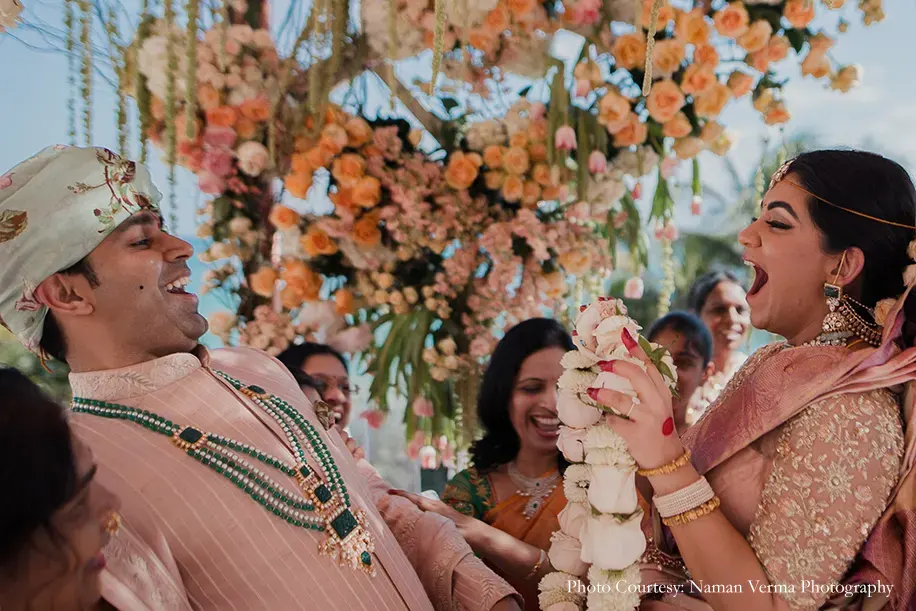
Photos Courtesy: Naman Verma Photography
Oonjal
Translating to ‘swing,’ for the Oonjal ceremony, the couple is seated on a swing and rocked gently, as the women of the family surround them and sing traditional songs. Elders feed them milk and banana to bless them, and women carry colored rice balls, earthen lamps and water pots around them three times in both directions. The rocking of the swing represents the trouble they may face in life, and the colored rice balls are thrown in four directions to ward off negativity.
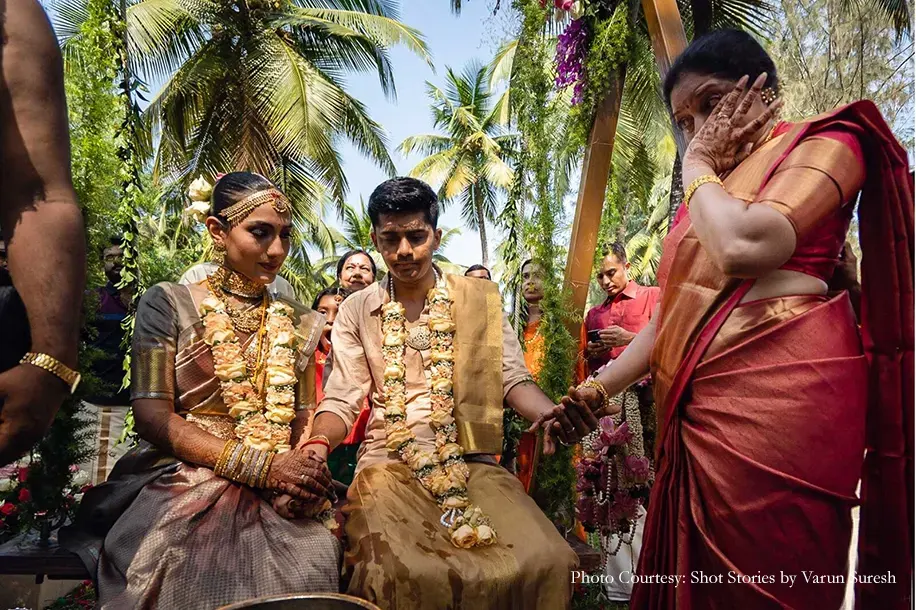

Photo Courtesy: Shot Stories by Varun Suresh
Kanyadaanam
A ritual common to every culture in the world, the Kanyadaanam marks the official giving away ceremony of the bride by her parents to the groom. He is made to sit on the floor where his feet are washed by the bride’s father, who sits opposite him with the bride in his lap. He supports her hands holding a coconut which is then offered to the groom, as her mother pours holy water over it. With this gesture, they officially hand over their daughter for life, asking him to cherish her and protect her. The bride and groom’s hands are tied with a sacred thread to seal their union.

Photo Courtesy: Made in Mono
Muhurtham
After the Kanyadaanam, the groom’s parents gift the bride a nine-yard silk saree to welcome her into their family, which is draped around her shoulders while the groom applies sindoor on her hair parting. The bride then changes into the new saree and returns for a few more rituals. The thaali (South Indian equivalent of mangalsutra) is then blessed by the priest and tied around her neck by the groom. The first two knots of the Thaali are put in by the groom, while the third and the final one is put in by the groom’s sister.

Photo Courtesy: Shot Stories by Varun Suresh

Photo Courtesy: Mystic Studios

Photo Courtesy: Shot Stories by Varun Suresh
Saptapadi
The bride and the groom hold hands and take seven steps around the holy fire while the priest chants Vedic mantras in Saptapadi, one of the most important rituals in a Hindu marriage. The groom then holds the bride’s left toe as she steps over a grindstone, symbolizing the solidity of their union.

Photo Courtesy: Shot Stories by Varun Suresh
Sammandhi Maryathai
After the completion of the nuptials, the two families then exchange gifts. The bride then bids her family goodbye with an emotional farewell after praying to the family deity and starts off for her new home with her husband.
Photo Courtesy: Made in Mono
Grihapravesham
The bride is received at her new home with a warm, celebratory welcome. Her mother-in-law performs a small prayer ceremony called aarti and escorts her inside the home where she seeks the blessings of the family deity first.
Photo Courtesy: Dreamcatchers Photography
Valeyadal
The valeyadal is the formal introduction of the bride to the members of the groom’s relatives, who welcome her into the family with gifts. The couple then plays a lot of post-wedding games as everyone gathers around to enjoy.

Photo Courtesy: Naman Verma Photography
Photo Courtesy: Stories by Joseph Radhik
Things you are sure to see in a Tamil Wedding
While most South-Indian Hindu weddings share common cultural and ritual nuances, there are some quintessentially Tamil aspects that you cannot miss at a wedding.
Temple Tranquility
While modern weddings today are often adapted as per the couple’s wishes, such as outdoor or beach weddings, traditionally Tamil weddings are held in the sanctity and tranquil atmosphere of temples.

Delectable Vegetarian Fare
An exquisite blend of flavors and textures, the traditional vegetarian spread at all Tamil weddings is loved by vegetarians and non-vegetarians alike. However, while the wedding lunch or dinner is vegetarian and served without alcohol, meat and cocktails may be on the menu at a later reception party. These, however, are never served at Brahmin weddings, while they may be offered at other Hindu weddings.
Photo Courtesy: Sundari Vijay | Vege Cravings
Morning Ceremony
While wedding ceremonies of most other Indian cultures take place after sundown, and some even late at night, Tamil wedding functions take place during the day.
Photos Courtesy: Naman Verma Photography
Fashion tips for Tamil Weddings
Kanjeevaram Sarees
The sheen of Kanjeevaram silk sarees in gorgeous hues woven with gold threads worn by the bride as well as the guests is one of the most enthralling aspects of a Tamil wedding.

Photo Courtesy: Knotty Affair by Namit & Vipul
Temple Jewellery
Swap your diamonds, polka, meenakari, and pearl ornaments for gold bling at a Tamil wedding. Carved into traditional intricate designs, these pure gold pieces add a regal touch to any outfit.


Gajra
Weave in the delicate beauty and alluring aroma of jasmine flowers with gajras (floral hair accessories). Wear one with a bun, braid or even open hair.

Photo Courtesy: Handcraftfilms | Roma Ganesh Photography
To start planning your wedding, click here. |
